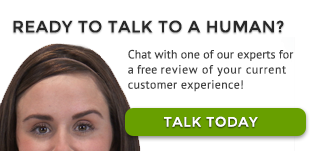 In their song “Won’t Get Fooled Again,” The Who expresses the common view of management in the line, “Meet the new boss, same as the old boss.” Most employees see their employers as just another authority figure to follow. In this Pavlovian system, the employer uses carrots and sticks to motivate the employee to work. Employees work because they need payment and benefits (carrots), and/or because they fear what will happen if they lose their jobs (sticks). However, some education and business organizations are moving beyond this classic approach, instead opting for systems that allow management to act more as guides who help employees exceed their own goals and expectations.
In their song “Won’t Get Fooled Again,” The Who expresses the common view of management in the line, “Meet the new boss, same as the old boss.” Most employees see their employers as just another authority figure to follow. In this Pavlovian system, the employer uses carrots and sticks to motivate the employee to work. Employees work because they need payment and benefits (carrots), and/or because they fear what will happen if they lose their jobs (sticks). However, some education and business organizations are moving beyond this classic approach, instead opting for systems that allow management to act more as guides who help employees exceed their own goals and expectations.
Such organizations must consider and cultivate a positive customer-centric culture, in which employees are engaged and dedicated to consistently producing their best work. We’ve all experienced different levels of engagement in a job, based on the organization’s culture. Some companies’ cultures are based on fear, while others are based on mutual effort toward common goals. Attaining the latter sort of culture requires employers to actively engage employees. Passionate, engaged employees feel that their feedback is valued. They advocate for and are inclined to stay loyal to their employer. Beyond focusing on increasing employee engagement, management can increase accountability through Customer Engagement Management (CEM) tools.
By engaging employees through Employee Engagement Management (EEM) and monitoring their output through CEM, management can create a culture of excellence and accountability. Some Customer Engagement models provide aggregate results, which are useful for making long-term marketing decisions, but have little impact on individual employees’ performance. In addition to those results, PeopleMetrics’ Customer Engagement Management solution also delivers actionable reports based on individual customer feedback and employee performance.
Immediately after customer feedback is submitted, a good CEM software system will send alerts to designated individuals in an organization via email. These action alerts allow management to take immediate, personalized action based on customer responses. For instance, if a customer mentioned that she was considering taking her business elsewhere, an alert might be flagged for customer service management, who would be able to immediately respond with strategies to earn back that customer’s trust.
Once a CEM system is in place, it encourages a culture of accountability. Action alert management makes it clear who is responsible for handling certain alerts, so management and employees always understand what follow-up is required. By pairing CEM and EEM, organizations can create positive, productive work cultures where high accountability and exceptional performance are the norm.
Topics: Employee Experience, Customer Experience





